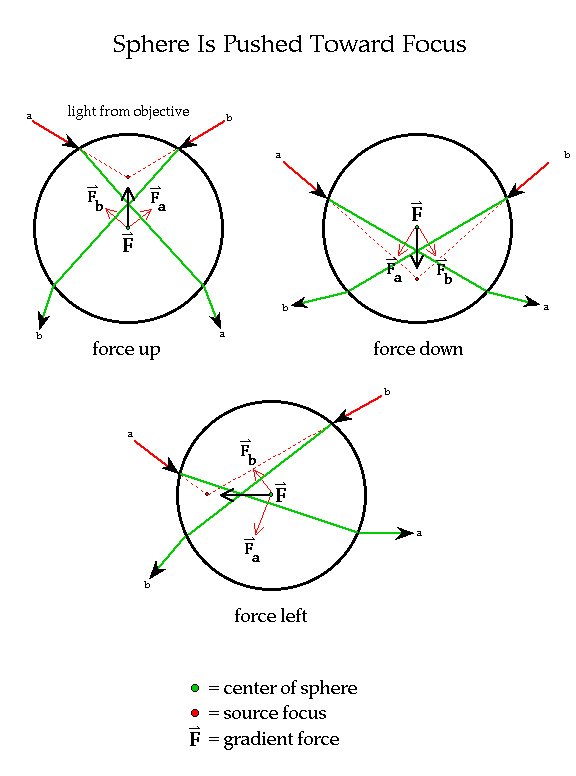
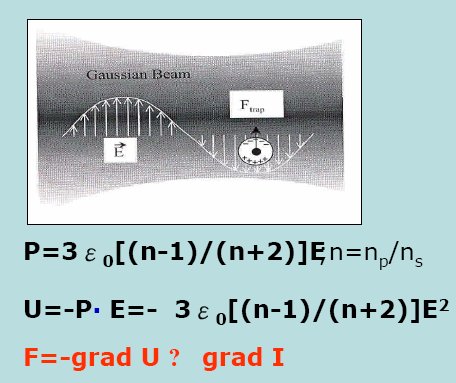
A simple optical tweezer proposed by S. P. Smith, and et al (ˇ§Inexpensive optical tweezers for undergraduate laboratories,ˇ¨ Am.J.phys.67,26-35(1999)) was duplicated in NTHU. It is a horizontal open microscope with a 100x oil immerse object lens, 30mW 658nm diode laser, and a USB web camera for image acquisition. Total cost is around 150-200k NT. A shopping list is here. 1um particle can be moved with a distance smaller than um by adjusting one of the reflecting mirrors. The movie shows how it works.
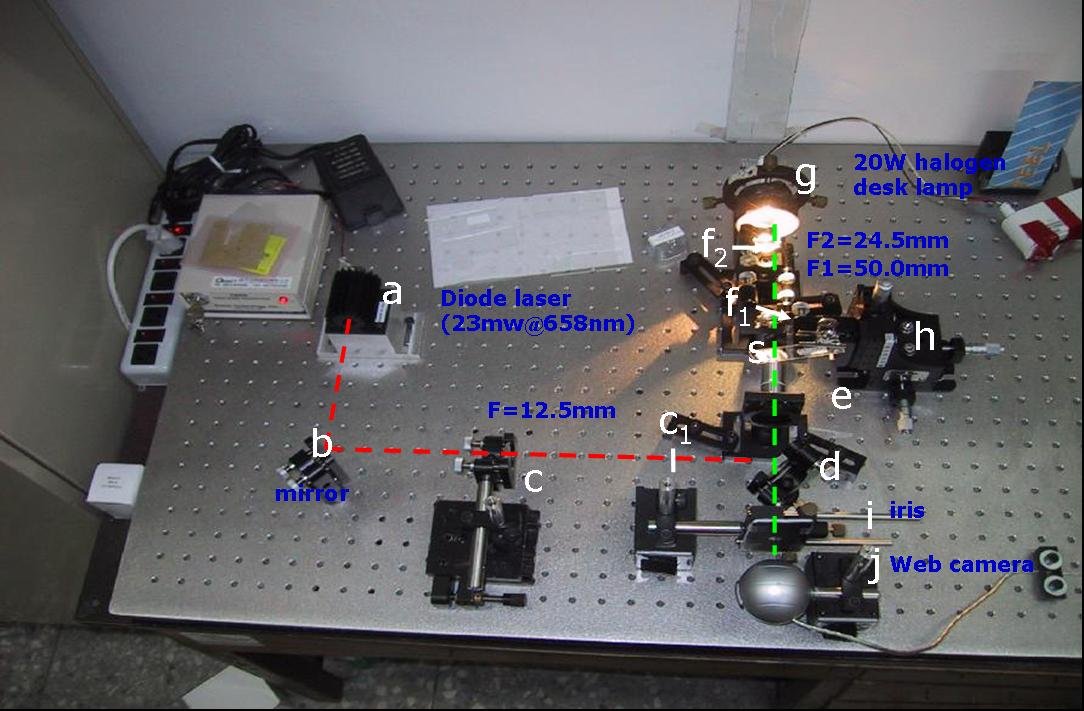
Thin Mylar film (30um) is as a spacer for sample cell. Here is how to make a cell. In order to enhance trapping force, the laser beam should be tightly focused. Therefore, alignment (minimize aberrations) needs to be checked, once the force is found too weak. A procedure is demonstrated here (PART-I, PART-II, PART-III).
One laser beam can be splitted into many laser spots with various configurations of Spatial Light Modulator (SLM), which is a 2D (1024x768) phase modulator. Our SLM is a reflecting type and capable of 2pi phase shift in visible wavelength region. The input pattern of SLM is calculated using Iterating Fourier Tranform. We can Simultaneously trap 6 particles using 150mW of 532nm DPSS laser.
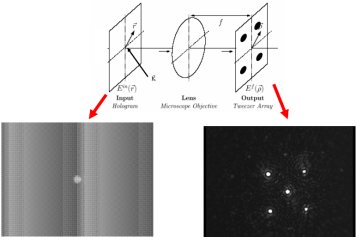 Optical Fourier Transform | 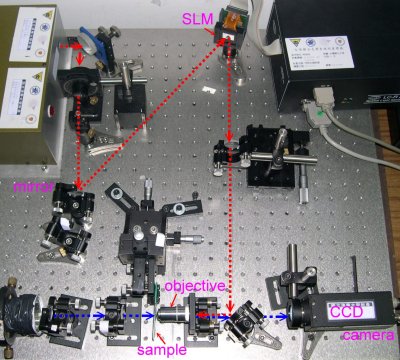 Experimental setup | 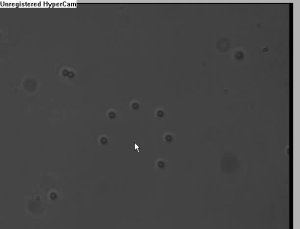 Trapping 6 particles in a circle |
An ongoing experiment is trapping two particles and recording a sequence of images to deduce the position correlation. We have found the correlation is proportional to the second derivative of inter-particle force. This approach can measure the interaction force with no theoretical model. This work is in the collaboration with Prof. Hong.